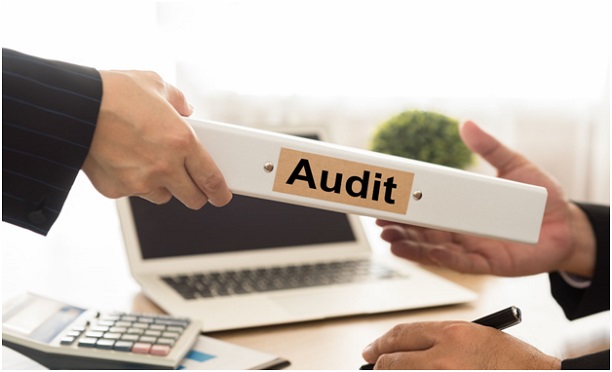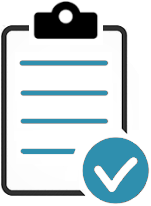An internal audit procedure documents all of the necessary processes performed before, during, and after an audit. It also documents who is responsible for audits as well as the purpose and objectives of audits.
Your Internal Audit Procedure goes hand-in-hand with your Internal Audit Checklist.
Contents
A well written internal audit procedure is a useful guide for all audits from start to finish. It keeps everything you need for internal audits in one place and ensures your audits are always done consistantly and correctly.

An internal audit procedure is a comprehensive tool that aids in an efficient auditing process. Taking the time to ensure your internal audit procedure is detailed and thoughtfully written can help you achieve better audits.
It will also detail who is responsible for audits as well as the purpose and objectives of audits.
Our Internal Audit Procedure is proven to work.
At its core, an internal audit procedure is a manual. It spells out everything anyone needs to know about internal audits within your business from start to finish. Having this set of instructions means performing internal audits will be an easy process for anyone that is placed in the auditor position.
Not only does your procedure outline how to perform an audit, but it also provides instructions for planning and reporting audits. These guidelines ensure internal audits are done correctly and the collected data is handled the right way.
An internal audit procedure keeps everyone on task and leads to success.
An internal audit procedure is an all-in-one document for everything pertaining to internal audits. There is no need to go searching for everything separately when you have an all-encompassing manual to reference.
Guidelines aren't the only thing an internal audit procedure includes. You will also find schedules, audit checklists, process flow diagrams, and all other related documentation in your procedure.
Having all of this information in one place makes it incredibly easy for anyone that needs it to find it.
Internal audits are generally performed by many different people or teams of people. Having a procedure that outlines how audits are to be performed and handled makes certain that it is done the same way every single time.
It's essential to overseeing the success of your business to have a consistent approach to all parts of the internal audit process. If everyone is doing it their own way, you won't be able to compare data and find areas for improvement as easily. Having a framework for auditors to use means the resulting information from internal audits will be consistent.
Our Internal Audit Procedure is proven to work.
While it's not a requirement, having a set of instructions for scheduling audits within your internal audit procedure is a big help in making sure it gets done. Along with guidelines for creating a schedule, you can include the most recent version of your audit schedule for everyone to reference.
Creating an audit schedule depends on reviews and knowing what processes need the most attention. If you keep up with the procedure of scheduling your audits, it will be much easier to create a workable and customizable schedule for all future audits.

Scope - The scope of any document tells what its purpose is. In the case of an internal audit procedure, the purpose is to outline the process of an internal audit as it applies to your business. This includes guidelines for the stages of planning, fieldwork, reporting, assessment, and follow-up.
Objectives - This section lists the objectives you are hoping to reach by performing an internal audit. It will usually talk about evaluating and finding evidence of success within a system. It could also include an objective about pointing out areas that require change. Whatever you are hoping to accomplish through an internal audit will go here.
Responsibilities - You should always include who is responsible for internal audits in your procedure. Don't put a specific name because then you have to revise the document every time there is a position change. It's much better to put a job title, so you don't have to worry about any updates to it in the future. Along with who is in charge, this section should list what exactly they are responsible for.
Planning - Every step that is relevant to the internal audit process in the lead up to it should be detailed in this section. This will usually include a specific way to plan each internal audit. It talks about meetings, reviews of previous audits, drawing up plans, scheduling, what needs to be addressed, etc. Internal audit planning should walk auditors through the process of getting everything ready to actually perform the audit.
Our Internal Audit Procedure is proven to work.
Fieldwork - This is where the internal audit is put into action. Here the procedure will guide auditors through what needs to be done throughout an internal audit and how to document the entire thing. Any necessary checklists may be included in this section as well. These are perhaps the most important guidelines and should be written thoroughly so that they are easy to follow.
Reporting - Once the audit is done, an auditor must create a report of their findings. This section of the internal audit procedure outlines what needs to be included in the report and how to go about filing it. If you use a template for audit reports, it can be included in the procedure as well. Having these instructions on reporting will ensure that they are done consistently each time.
Corrective Action - The corrective actions are identified on the Internal Audit, Non-conformity & Correct Action Tracker along with the person responsible and the timescales for completion.
The process or procedure is re-audited and the issue closed out when all corrective actions are completed. A member of the audit team will then sign off the audit report. An audit summary is prepared for management review.

It can be hard to see the necessity of some documentation when it comes to running a business. However, an internal audit procedure is a goldmine of information that is incredibly valuable to you and every other employee. It ensures that performing internal audits is as easy as possible and that they are done correctly.
Our Internal Audit Procedure is proven to work.
An internal audit procedure provides plenty of benefits to anyone that has one on-hand. It is a rulebook for performing internal audits that is full of useful information for auditors. Having all of that information in one place makes everyone's lives a lot easier.
An internal audit procedure supports the consistency that is essential to improving any business.
Internal Auditing & Gap Analysis
- ISO Internal Audit Explained
- How to Conduct an ISO 9001 Internal Audit
- How Can An Internal Audit Procedure Help Me?
- Internal Audit Checklist - Everything You Need To Know
- Internal Audit Checklists, Procedures, Action Trackers & Programmes
- ISO 14001 Environmental Internal Audit
- Internal Audit Templates [ISO 9001, 14001, 45001]
- Internal Audit Template - How Can it Help Me?
- ISO 9001 Certification Audit ~ The Ultimate Guide
- How to do a Gap Analysis - The Definitive Guide [ISO 9001]
- ISO Gap Analysis Templates [ISO 9001, 14001, 45001]
Updated: 23rd March 2023
Author: Richard Keen

Richard is our Compliance Director, responsible for content & product development.
But most importantly he is ISO's biggest fanboy and a true evangelist of the standards.
Learn more about Richard

Don’t Try to Manage It All Alone!
Our ISO Auditors and Quality Manager Trainers have been in this industry for years, and since 2002 we’ve been providing thousands of small businesses and large corporations with the tools they need to get certified.
Instead of trying to create everything you need to follow this procedure from scratch, use ours.
Before you invest all the hours reinventing the wheel, before you spend countless dollars outsourcing the task — try our templates.
| QMS ISO 9001 |
EMS ISO 14001 |
OH&S ISO 45001 |
|
Internal Audit Procedure The purpose of this procedure is to define your organization’s process for undertaking QMS audits, process audits, and supplier and legislation audits in order to assess the effectiveness of the application of the quality management system and its compliance to ISO requirements. 8 pages, MS Word. This procedure also defines the responsibilities for planning and conducting audits, reporting results and retaining associated records. Forms & Reports also included:
>> Free Download - Control of Calibrated Equipment Procedure - this will give you a good idea of what to expect when you purchase the procedure. |
£15 |
£15 |
£15
|
Pay by Credit Card, Debit Card, PayPal or Apple Pay.


|
Please read our Money Back Guarantee. |
Bought by Small Businesses and Large Corporations our templates have been sold online and CD since 2002.
Used by:
The Templates are used by first-timers following our step-by-step, clause-by-clause guidance documents; and experienced Quality Managers wishing to streamline and improve their existing documentation.
The application of our templates is scalable and generic; regardless of the size and type of organization. The elements that form the quality management system are the same.
1. Our customizable templates save you time and money by offering a streamlined process to create your quality documentation
2. They’ve got everything you need in one simple template
3. Proven to work our templates have helped thousands of businesses big and small achieve certification
4. Documents use styles to make reformatting and rebranding a breeze
5. Our templates are generalizable for any industry or sector. The application of our templates is scalable and generic; regardless of the size and type of organization.